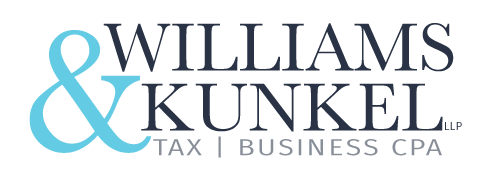Most construction businesses will use two different tax-accounting methods: one for their long-term contracts and one generally for everything else. A long-term contract is any contract that is still going on in the same year it’s started.
Cash method of accounting
One method that some construction contractors can use for both generally and specifically for their long-term contracts is the cash method. However, there are limitations on who can and cannot use this method.
There are two situations in which your use of the cash method of accounting can be limited. First, you are not allowed to use the cash method if your business is a corporation, or a partnership with a C corporation, whose average annual gross receipts exceed $5 million. There is no exception to this rule.
Second, depending on what type of business you have, you might not be able to use the cash method if your total purchases of “merchandise” for the year are “substantial” compared with your gross income for the year.
Accrual methods of accounting
If you can’t use the cash method, you must choose an accrual method of accounting. In the construction industry, several specialized accrual methods are available, each of which has its own set of rules and limitations. In general, all accrual methods at tempt to match the expenses relating to a specific contract to the income from that contract.
Choosing an accrual method
Choosing a permissible method of accounting for tax purposes involves the three steps discussed below. As your business expands and changes, you might have to use a different method of accounting. You should review the following three steps every year to ensure that you are using a permissible method of accounting for your construction contracts.
Step one: Classify all construction contracts as either short-term or long-term
A long-term contract is any contract that spans a year-end. If you have a contract that you start on Dec. 26 but do not complete until Jan. 23, you have a long-term contract. Conversely, a short-term contract is any contract you start and finish within one taxable year.
As noted above, you can use your general accounting method for your short-term contracts. But then you must choose an accounting for your long-term contracts. The rest of these steps will lead you through the process of choosing a method for long-term contracts.
Step two: Classify all long-term contracts as either home-construction or general-construction contracts
Home-construction contracts are contracts for work on buildings that have four or fewer dwelling units. Eighty percent or more of the estimated total contract costs must be for the construction, improvement or rehabilitation of these units. If a contract is not a home-construction contract, it is a general-construction contract.
For long-term general-construction contracts, there is one more step to take to choose the correct accounting method.
Step three: Classify yourself as either a small or large contractor
This is a two-part step. The first part calls for measuring your average annual gross receipts for the last three tax years of your construction business. If the amount is $10 million or less, you are a small contractor. If it is more than $10 million, you are a large contractor and have no need to consider the second part of this step. Large contractors must account for long-term contracts using the percentage-of-completion method, also known as PCM, for their general-construction contracts. Under PCM, contract income is reported annually according to the percentage of the contract in question that has been completed in that year. For example, if a contract is 50 percent complete at the end of the taxable year, then 50 percent of the contract income would be included in taxable income.
Are you a small or large contractor?
To know, first answer these questions:
Q: Are your annual gross receipts for the last 3 years $10 million or less?
If your answer is yes, then answer the next question.
If no, then as a large contractor, you must use the PCM for your general construction contracts.
Q: Have you any general-construction contracts that you estimate will take more than 2 years to complete?
If yes, use the PCM for your longer-duration general-construction contracts.
If no, then as a small contractor, you should use either: accrual, exempt percentage of completion method, completed contract method, or PCM for all your general construction contracts.
Here is information about the accounting methods that small contractors can use:
Accrual Method of Accounting
Income: You include an item in income in the tax year when all events have occurred that fix your right to receive the income and you can determine the amount with reasonable accuracy.
Income is generally earned when you have finished the work to your customer’s satisfaction and is due when you bill your customer. This means that sometimes you will include an item in income before you have actually received payment.
You may use this method for your long-term contracts only if your annual gross receipts do not exceed $10 million and the estimated completion time does not exceed 2 years.
Exempt percentage of completion method – general rule
The EPCM is a method that only affects how you see your income on your tax return. When you use this method, all G&A and job costs are deducted using the accrual method.
There are several advantages to using EPCM:
- It is the most accurate way to measure income;
- It evens out the reporting of income over the extent of a contract;
- Losses may be recognized according to the percentage of the contract completed; and
- It is the method preferred by most banks and bonding companies.
The main disadvantage is its complexity and the fact that it accelerates income more than other methods.
To determine your current year’s gross receipts for a long-term contract, you multiply its “completion factor” – that is, its percentage of completion – by its “total contract price” and then subtract the amount of gross receipts you previously reported for this contract. You compute your gross receipts in this way even if you bill the customer for a different amount.
Completed contract method
With this method, you report all the income from a contract and deduct all the related job costs in the year the project finishes.
The number of indirect costs that you must characterize as job costs will vary depending on your size. In general, a large homebuilder will have to capitalize a greater number of indirect costs than a small homebuilder. You should consult your tax adviser to learn what types of indirect costs you must capitalize.
The advantage of the completed-contract method is that it normally achieves the maximum deferral of taxes.
The disadvantages are:
- The reusulting books and records do not show clear information concerning operations;
- Income all together in a year when a lot of jobs finish
- Losses on contracts are not deductible until contracts finish
Call Williams & Kunkel CPA today in Flower Mound at 972-446-1040 to have a chat about your construction business.
In addition, you can connect with us to receive updates throughout the business week by following us on Twitter or LinkedIn or liking us on Facebook.

